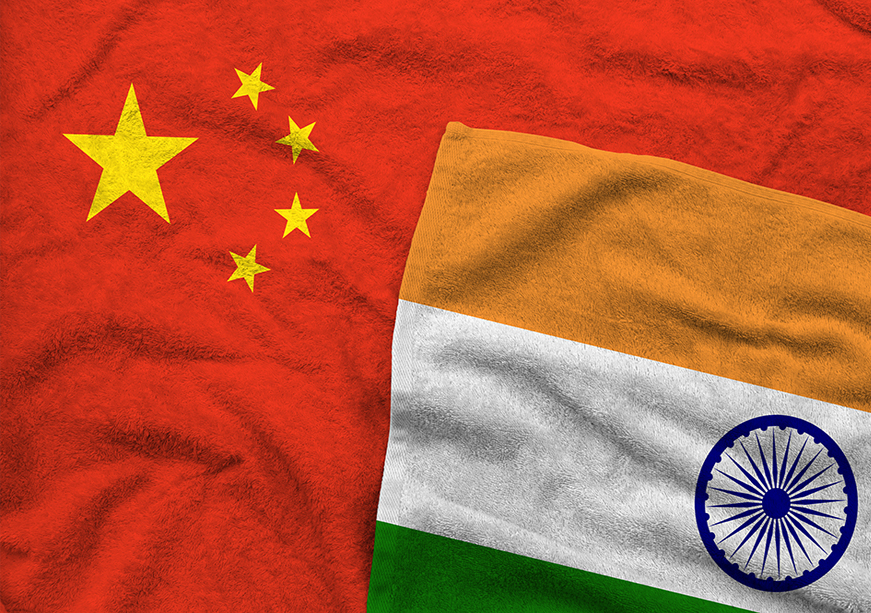-
CENTRES
Progammes & Centres
Location
This year marks 75 years of India-China diplomatic relations. Despite being the first non-socialist nation to recognize China, the ties have faced ups and downs, mainly due to the boundary dispute, which led to the 1962 war.

Image Source: Getty
This year marks the 75th anniversary of India and China establishing diplomatic relations. While India was the first non-socialist nation to recognise China, the relationship has been marred by several ups and downs. The unsettled boundary dispute has been a source of friction, culminating in the 1962 war, but despite that the Line of Actual Control (LAC) remained largely peaceful. Prime Minister Rajiv Gandhi’s visit to Beijing to meet China’s paramount leader Deng Xiaoping in 1988 paved the way for a new approach.
The Rajiv-Deng accord in effect meant that future generations would resolve the border row, but both nations would build trade and people-to-people ties. The thaw led to the border pacts of the 1990s that many in the Indian leadership wishfully saw as an effective guarantee of peace.
This calm was shattered by the clashes in June 2020 at Galwan that led to the deaths of Indian and Chinese troops. China’s unprovoked bid to unilaterally change the status quo remains an important turning point between the two Asian powers. Bilateral ties went into a deep freeze since 2020. But military and diplomatic negotiations led India and China to agree to a patrolling agreement in October 2024 following which Prime Minister Narendra Modi and Chinese President Xi Jinping met in Russia last year.
China’s unprovoked bid to unilaterally change the status quo remains an important turning point between the two Asian powers.
Foreign secretary Vikram Misri visited China in January to chart the contours of New Delhi’s cautious opening up to Beijing. Both sides resolved to dedicate the year to promoting greater public diplomacy to restore trust and public confidence, which has given the Chinese leadership an opportunity to present an amiable face. In their messages to India, President Xi proposed the dragon-elephant tango and his deputy, Premier Li Qiang, reinforced it by stating that China is ready to work with India and enhance strategic mutual trust.
This ebullient Chinese outlook stands in contrast to a sombre assessment among the Indian leadership. PM Modi has suggested that restoring ties was a work in progress, underlining much spadework had to be done as the relationship was in a deep freeze during the last five years, in a clear reference to the military stand-off that began in 2020. Earlier this month, Misri attended an official function held by the Chinese embassy to mark the 75th anniversary. During the intervening period since 2020, a comparatively lower-ranking official had usually showed up at the event. These developments indicate an earnest initiative by India to normalise relations amid cautious optimism, although Misri acknowledged that the path to get ties back on track would be a “difficult one”.
The biggest variable in this dynamic remains the credibility of China’s assurances. For that, we need to analyse the pressure points that could be shaping China’s motivations to hold out an olive branch. First, Donald Trump’s escalating trade war has taken tariffs on Chinese products to nearly 54%, coupled with a downturn in its realty market, and low consumer confidence. If factory owners choose to shift units outside China, it could lead to job losses which may have implications for Xi’s hold on power.
Second, Beijing’s overtures to New Delhi form a part of its outreach to the periphery, as Xi embarks on a diplomatic mission to Hanoi, Phnom Penh, and Kuala Lumpur. His trip to Vietnam, Cambodia, and Malaysia will be his first overseas this year. China has robust trade with Southeast Asian nations but niggling overlapping claims remain in the South China Sea. Besides in the light of US-China tensions, it makes sense to build bridges with the Association of Southeast Asian Nations, especially when Malaysia holds the chair. Malaysian PM Anwar Ibrahim is counted as Beijing’s friend, given that he visited China thrice since assuming office in 2022.
China has robust trade with Southeast Asian nations but niggling overlapping claims remain in the South China Sea.
Third, the notion of “reverse-Nixon” gaining traction in the West could have influenced the outreach to neighbours. Until recently, the Western alliance under Joe Biden’s administration was aiming to defeat Moscow, and had tried to make Russian President Vladmir Putin an international pariah. China now sees the tide turning with President Trump willing to figuratively break bread with Putin, and the Kremlin responding with a proposal to jointly extract rare materials in Russia.
The chief of Russia’s sovereign wealth fund, Kirill Dmitriev, recently disclosed that talks between Moscow and Washington had begun on mineral cooperation, and some firms had evinced interest. Curiously, this development comes at a time when China is trying to constrict the flow of critical elements to hurt technology supply chains, in retaliation for the West blocking its access to advanced know-how. Lastly, there seem to have been strains between the Communist Party of China and the People’s Liberation Army with disappearances and purges of senior officials from the Central Military Commission that oversees the latter.
This apparent discord has surfaced at a time when Taiwan has raised alarm about subversive activities, excoriating China as a “foreign hostile force”. Taiwanese President Lai Ching-te publicly called out the threat posed to the island’s sovereignty, Beijing’s renewed efforts to infiltrate its defence forces, and an agenda to erode national identity. Beijing responded by ordering “Strait Thunder 2025A”, firing rockets into the straits from Fujian. This indicates that dealing with Taiwan, the military, and the economy may be increasingly occupying Xi’s bandwidth. Amid such pressing issues, it suits China to send smoke signals to India of seeking to make amends.
Unless China agrees to find a lasting solution to the structural issue — the LAC — its intent to seek rapprochement will always be suspect.
The Chinese leadership has laid emphasis on promoting exchanges and pursuing cooperation in various fields, while “properly handling the boundary question”. This is essentially harking back to the Rajiv-Deng compact. Unless China agrees to find a lasting solution to the structural issue — the LAC — its intent to seek rapprochement will always be suspect. In a recent interview to a Chinese media outlet, the Chinese ambassador to India dangled the blandishments of greater market access and economic cooperation. The envoy did not even refer to the border row once, playing it down as mere obstacles and disruptions.
Thus, the conceptualisation of “elephant-dragon tango” belies China’s design of brushing the dispute aside. The “elephant-dragon tango” is nothing by an updated version of the chimera of “Ch-India” (the simultaneous rise of China and India) that some in India still harbour. This sophistry of words should not beguile New Delhi, since as recently as in January, India’s army chief cautioned that the situation on the LAC was stable yet sensitive, and there remained some “degree of a stand-off”.
Lastly, even its metaphor of elephant for India reeks of condescension. In the last few years, India has moved away from the laggard and derisive categorisation of “Hindu growth rate” to being the fastest-growing major economy. China will have to remove its blinkers to see that India is no longer a land of elephants and snake charmers.
This commentary originally appeared in Financial Express.
The views expressed above belong to the author(s). ORF research and analyses now available on Telegram! Click here to access our curated content — blogs, longforms and interviews.

Professor Harsh V. Pant is Vice President – Studies and Foreign Policy at Observer Research Foundation, New Delhi. He is a Professor of International Relations ...
Read More +
Kalpit A Mankikar is a Fellow with Strategic Studies programme and is based out of ORFs Delhi centre. His research focusses on China specifically looking ...
Read More +